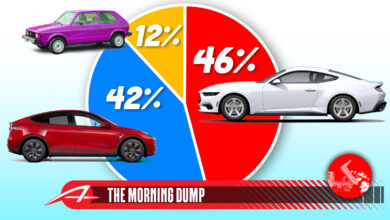Curbside Charging Design Integrates EV Stations with Street Lights

A new design for electric vehicle charging stations harnesses the power and existing grid connections of street lights, offering a seamless, cost-effective charging solution for drivers who park on the street.
“Half of city drivers park on the street without a garage to charge in,” Luke Mairo, co-founder and chief operating officer of Voltpost, told a product demonstration in San Francisco, reports Canary Media. “We need citywide solutions, before people start to take matters into their own hands by running wires out their windows.”
- The climate news you need. Subscribe now to our engaging new weekly digest.
- You’ll receive exclusive, never-before-seen-content, distilled and delivered to your inbox every weekend.
- The Weekender: Succinct, solutions-focused, and designed with the discerning reader in mind.
Providing enough chargers for an electrified car fleet is becoming an issue in the United States as more drivers switch to EVs. This is especially true in big cities, where drivers who rely on street parking lack a reliable space to install their chargers. Some projects—like New York City’s partnership with Flo—have piloted schemes to expand curbside charger access. But access to power has been expensive when lines are buried under streets, curbs, and sidewalks—which creates a “major bottleneck for curbside charging,” Canary Media writes.
“New York City has a goal of 10,000 curbside chargers by the end of the decade,” said Mairo, but the city can’t afford to continue paying the $250,000 per charger price for all those installations.
Voltpost aims to overcome that expense by tapping into power where it’s already available above ground—through lamp posts. They are not the first company to do this, writes Canary Media. Ubitricity has already installed thousands of such chargers in Europe, and several companies have installed about 600 light post chargers in Los Angeles.
Voltpost’s design aims to improve on the shortcomings of its predecessors. Its units are encased in aluminum to prevent vandalism or theft, cables are mounted eight feet from the ground to avoid getting tangled in foot and vehicular traffic, and the charging handle falls nearly flush with the EV for that same reason.
The charging units can clip to a collar on the lamp post for easy installation in less than an hour, and replacement is just as easy if a unit is damaged. Mairo said the modular design could enable cities to adapt to changes in the fast-evolving EV charging landscape, and even allow the units to take on other functions, as cellular repeater stations or sensor platforms for “smart city” services, writes Canary Media.
Voltpost has a mobile app and web interface for drivers to manage location, reservation, and payment services.
One snag is that U.S. streetlight networks are wired to operate at 120-volt power, which would charge vehicles at a slower rate than a 240-volt network, but the company says cities switching to LED street lamps could free up power for EV charging. Meanwhile, the slow charging speed is still functional for commuters and other drivers who don’t need to charge quickly.



